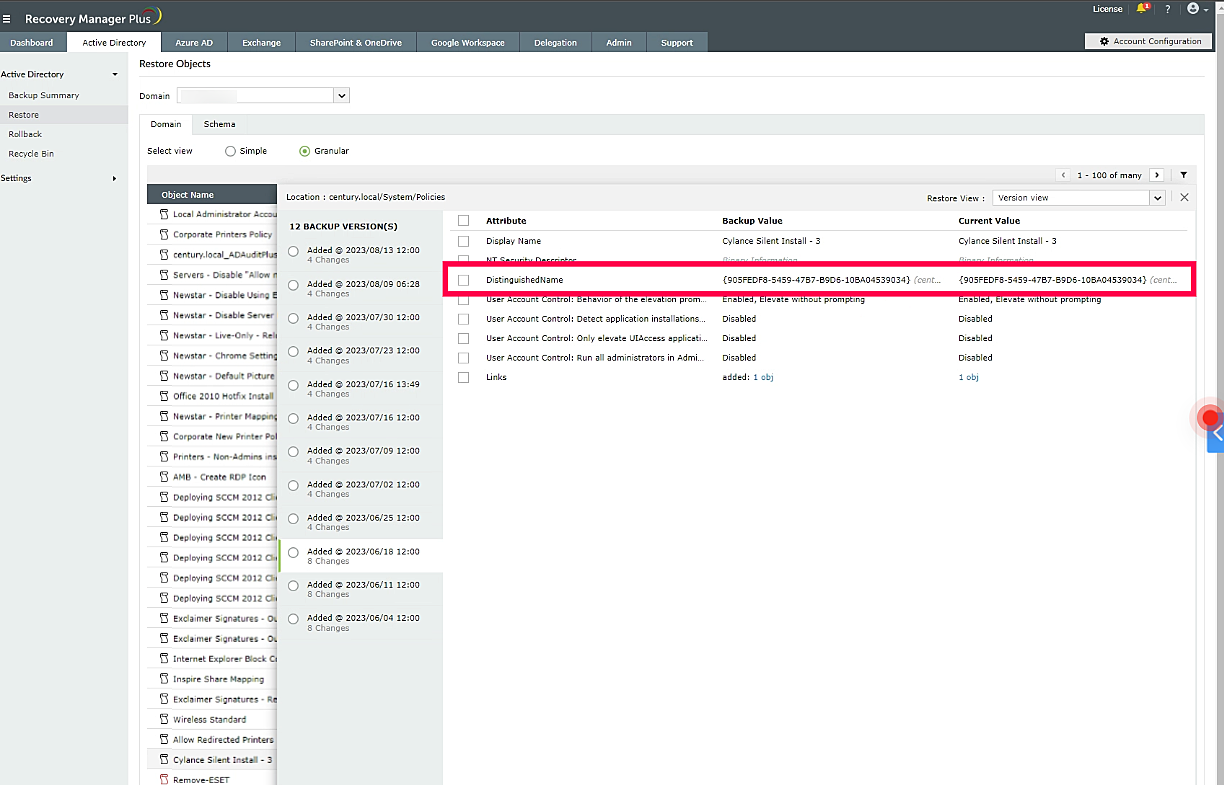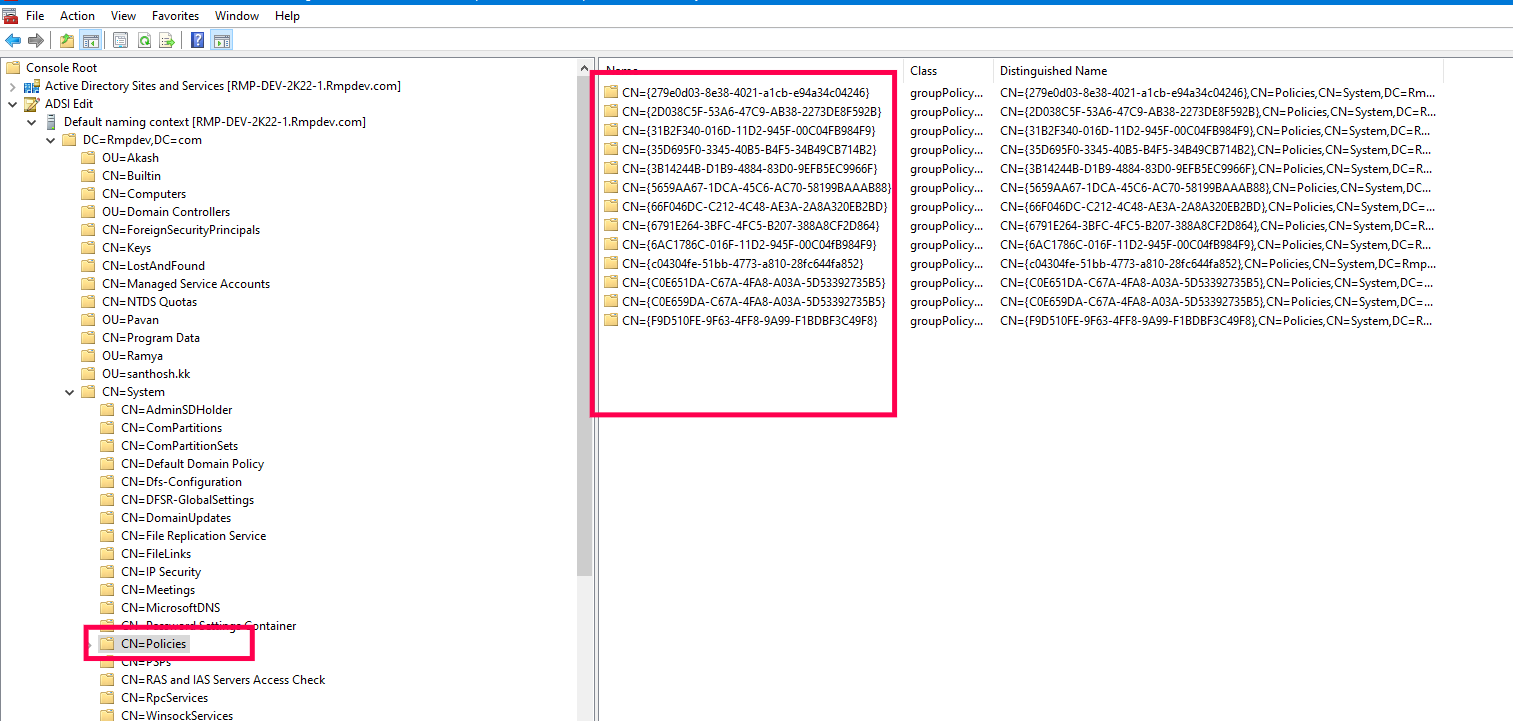The following are a few errors that might occur when backing up GPOs and related settings. Refer to the troubleshooting guide below to rectify these errors.
Note: RecoveryManager Plus backs up the Group Policy Administrative Templates folder by executing PowerShell commands remotely from the RecoveryManager Plus server using the Windows Remote Management (WinRM) service. The backed-up files are temporarily stored in the domain controller's ADMINS share. They are then moved to the RecoveryManager Plus server.
This error occurs when the service account does not have access to the ADMINS share on the domain controller.
To fix this issue, perform the following steps:
\\<dc-name>\ADMIN$\
This error might occur due to the following reasons:
To fix this issue, start the WinRM service on the domain controller using the Enable-PSRemoting -Force PowerShell command.
To fix this issue, run the following PowerShell command on the RecoveryManager Plus server:
winrm s winrm/config/client '@{TrustedHosts="<dc1-name>,<dc2-name>"}'
Replace <dc1-name> and <dc2-name> with the actual domain controllers that were used during the RecoveryManager Plus account configuration.
To fix this issue, make sure the following inbound ports on the domain controller are open: 389, 5985, 5986, and 445. To test the connection to the domain controller from the RecoveryManager Plus server, run the following PowerShell command:
tnc <DC-name> -port <port-number>
To fix this issue, add the service account to AD's built-in Administrators group.
This issue occurs when the group policy module is not present in the DC.
Note: If you are using a Window Server 2008 DC, contact RecoveryManager Plus support to resolve your issue. For all other versions of DCs, follow the steps listed below.
Check if group policy module is installed in the DC. If not, install it by following the steps listed below.
This issue occurs when the GPO that is to be backed up is not found in the environment. This might be due to orphaned GPOs being present in the environment.
This behavior occurs if a user or a group name that is referenced in a Group Policy Object corresponds to an abbreviation that is defined for a built-in group that is used by the Security Descriptor Definition Language (SDDL) format. For example, this behavior occurs if you name a user or a group "SA." The "SA" abbreviation corresponds to the SDDL security identifier (SID) string that represents the built-in Schema Admins group.
If a user name or a group name matches an SDDL abbreviation that is defined for a built-in group, a function that is called by the Group Policy Management Console treats the user name or the group name as a SID. Therefore, the backup fails.
To fix this issue,
This error occurs when the account used to configure RecoveryManager Plus does not have privileges to access the GPO containers.
This error occurs when the specific GPO is corrupted or when it cannot be copied or imported to GPMC.
Contact Microsoft support or delete and recreate the GPO.
This error occurs when a Folder Redirection Policy is set for a GPO. This issue occurs due to an SID change in machines running Windows Server 2003 or higher.
These issues occur because the Folder_Redirection section of the .ini files is larger than 32,767 characters. However, the limit for the combined SID list for all folders is 32,767 characters. For more information on this issue, click here.
To solve this issue,
This error might occur if the service account does not have enough privileges to read the specific Group Policy container.
To fix this issue, perform the following steps:


This issue occurs when the GPO container is not present in the SYSVOL folder.
To fix this issue, try either of the following steps.
This version does not support backups of GPOs that have folder redirection policies set. Refer to Microsoft's help document for more information: https://learn.microsoft.com/en-us/troubleshoot/windows-server/group-policy/error-0x8007000d-backup-gpo-cmdlet. To fix this issue, configure the domain controller with the Windows Server with Desktop Experience version installed.
If the copy process fails, an invalid XML file may be left in one of the subdirectories, thus generating this error. To fix this issue, create a clean copy of the GPO by following the steps listed below:
%ALLUSERSPROFILE%\Application Data\Microsoft\Group Policy\History.
Copyright © 2023, ZOHO Corp. All Rights Reserved.